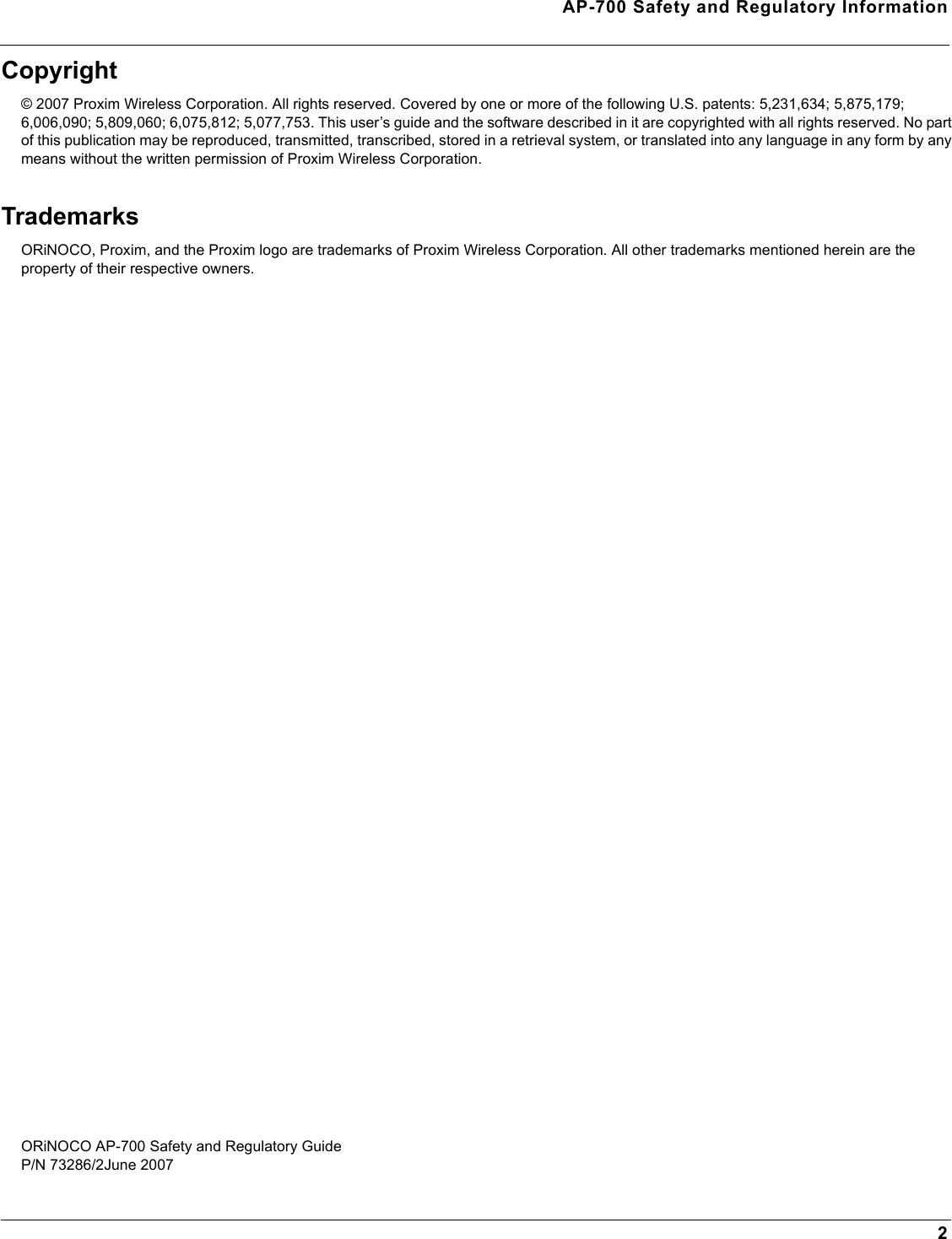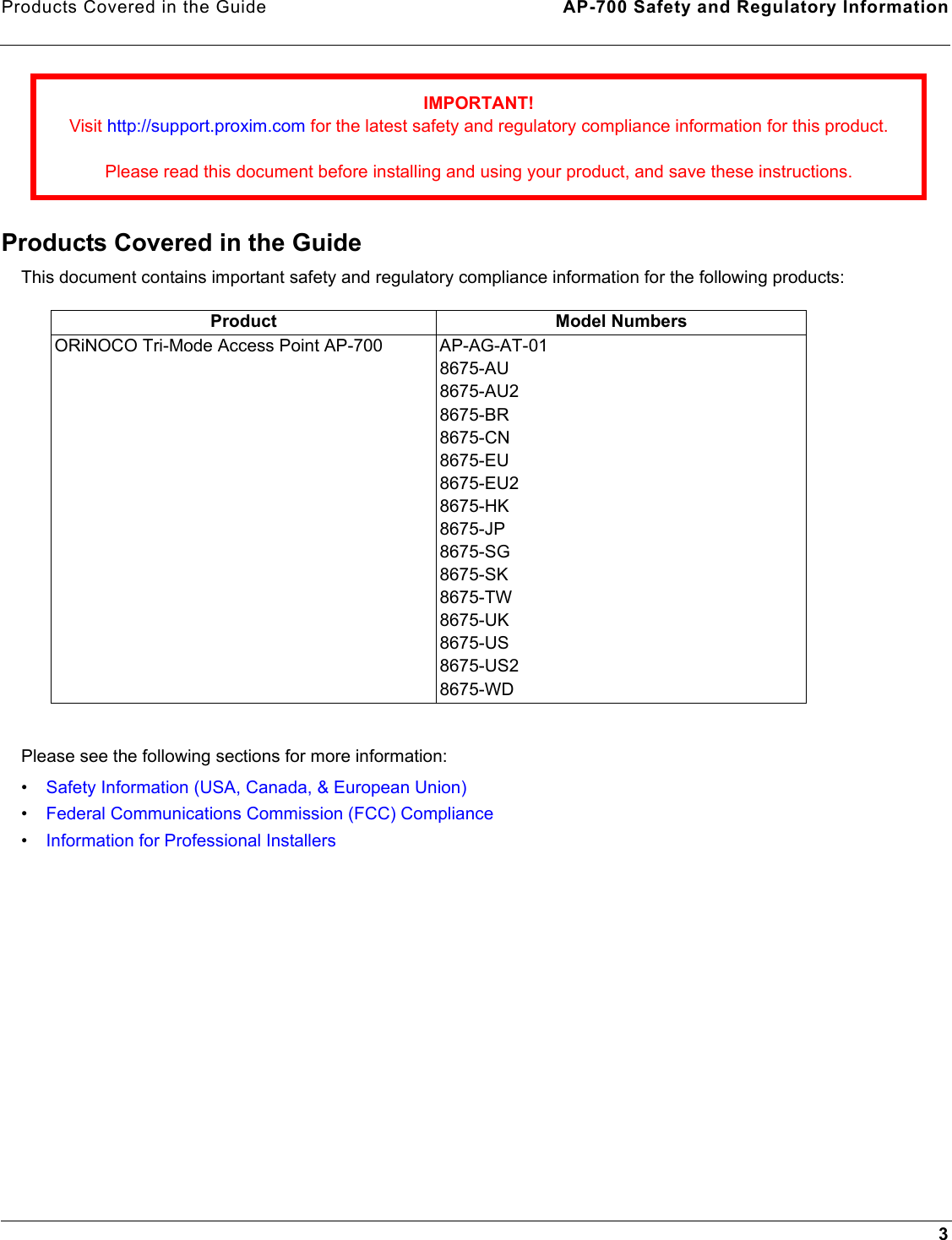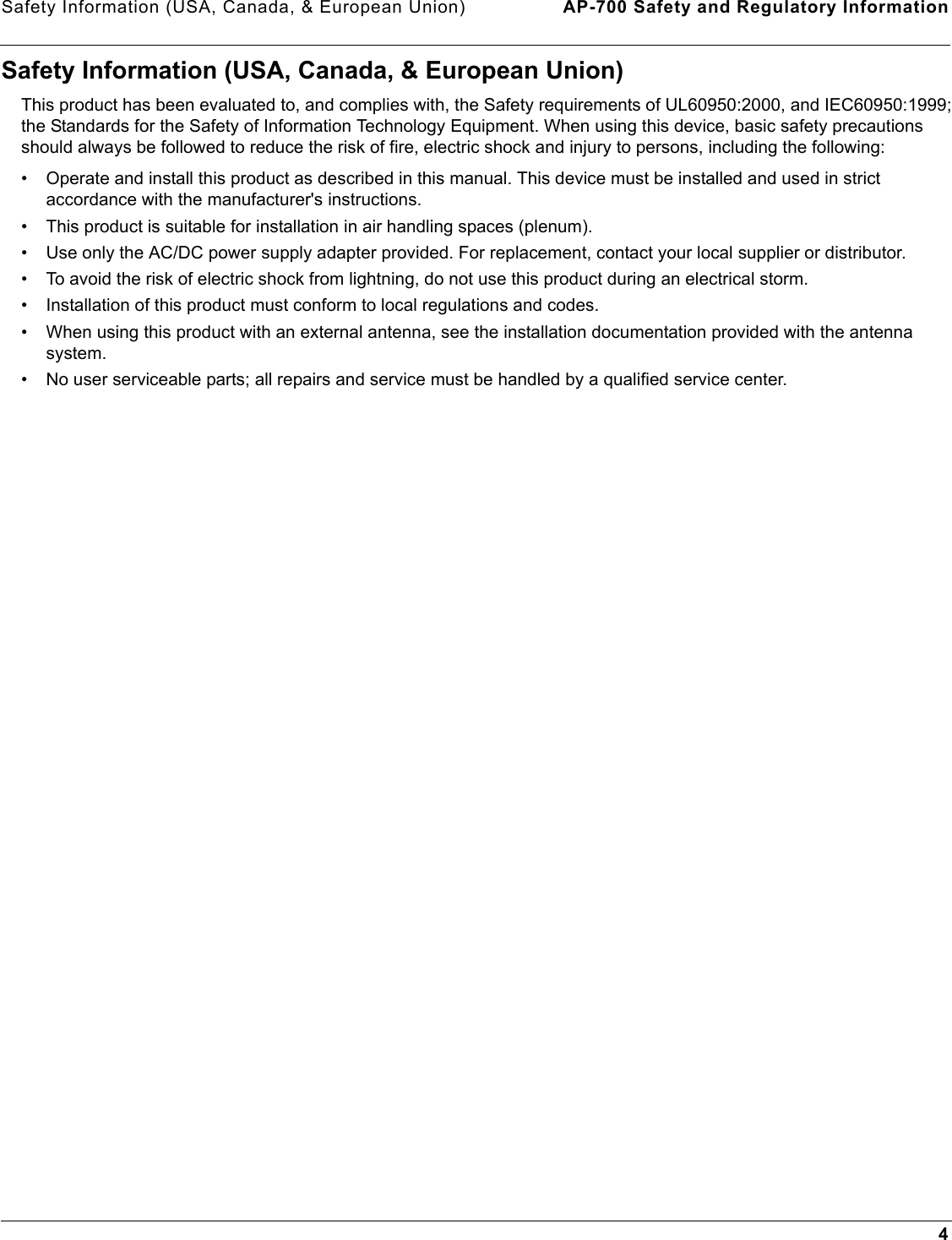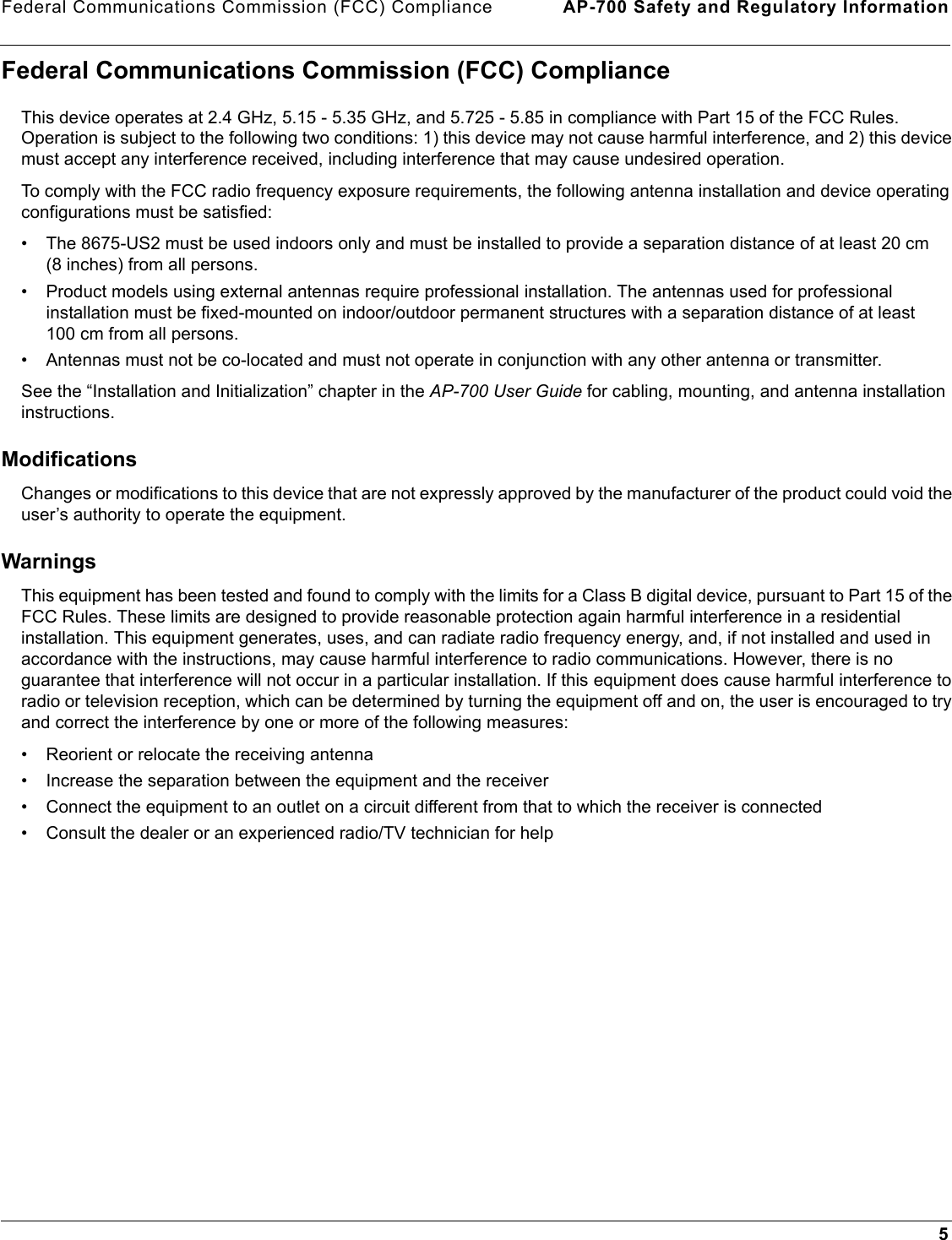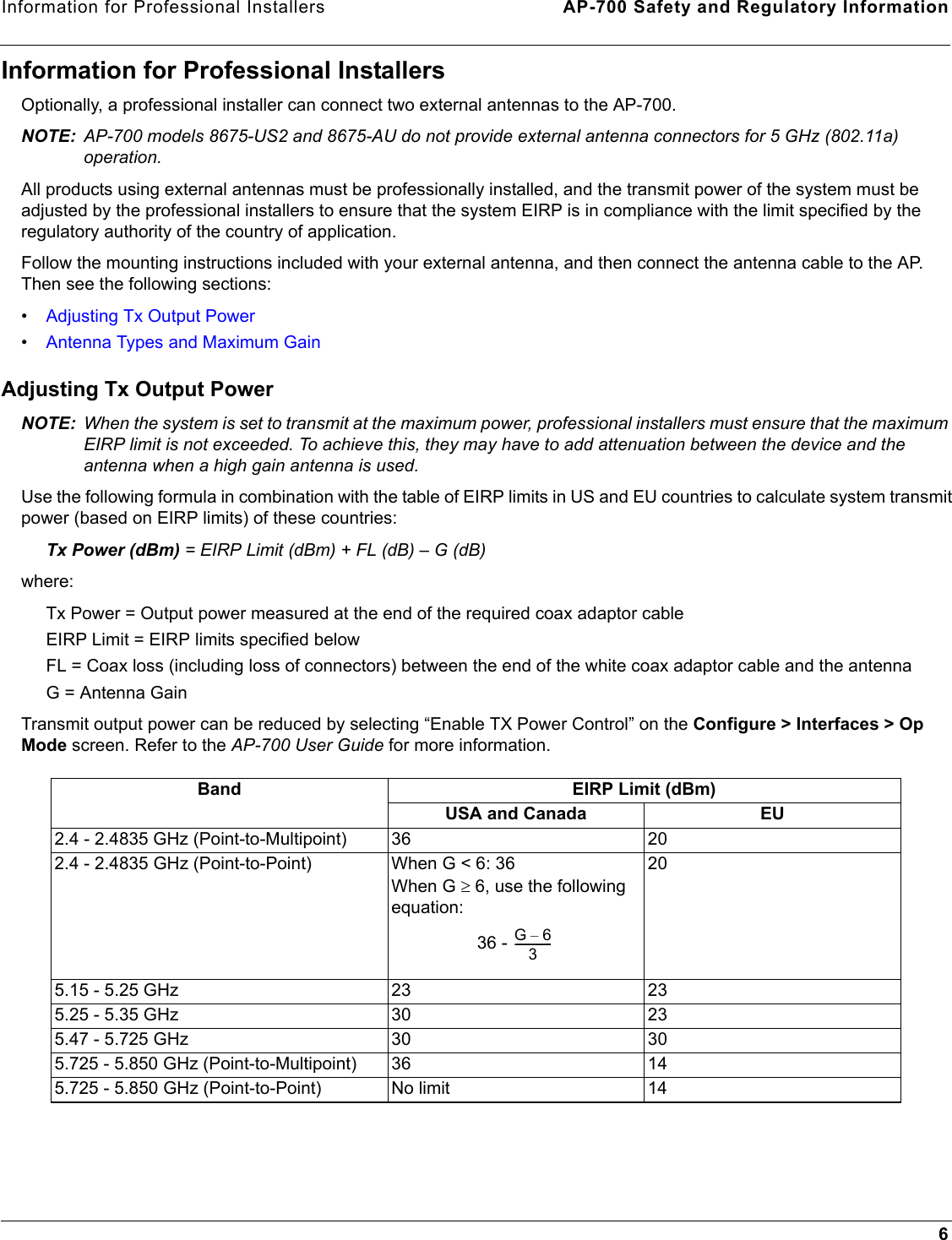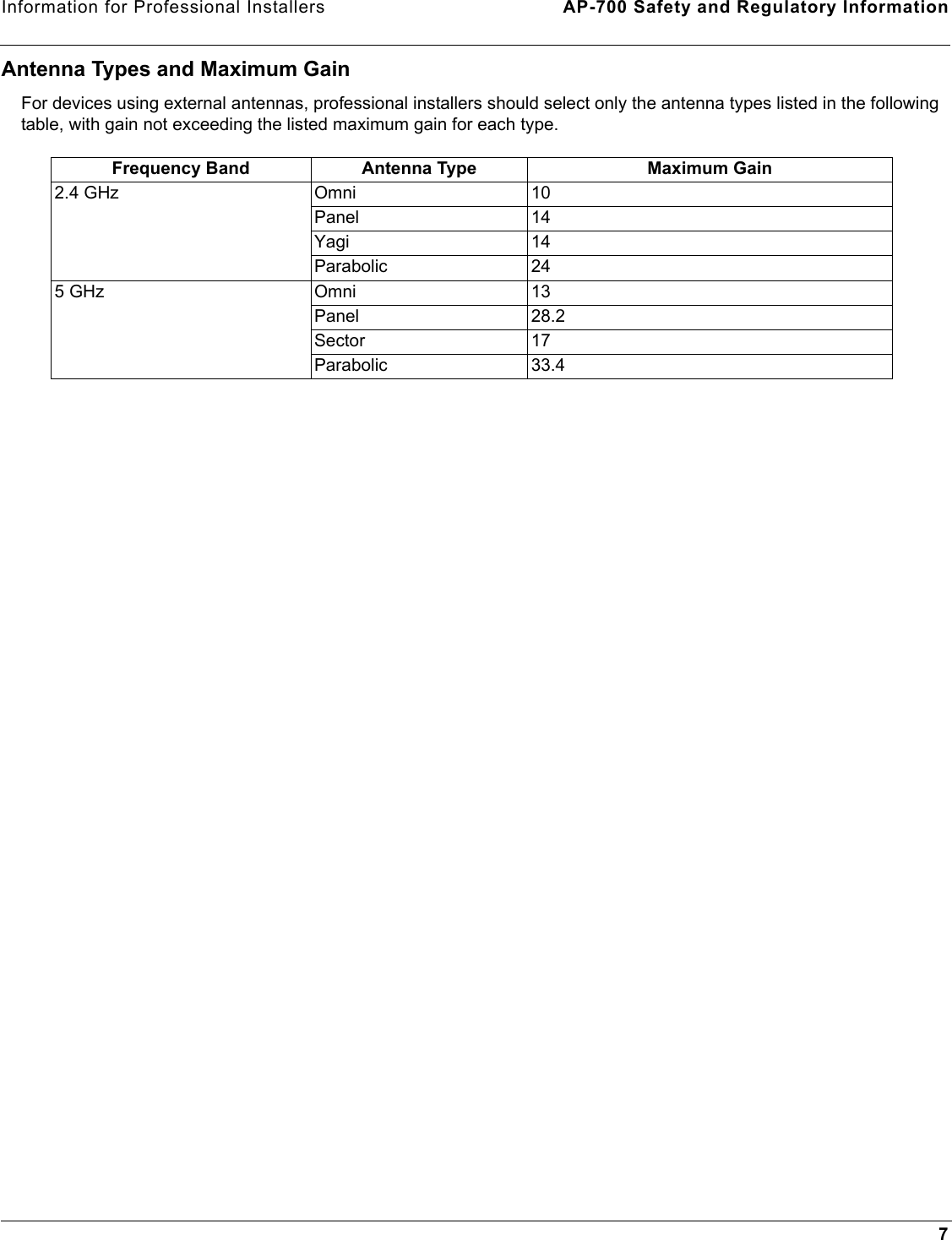Proxim Wireless AP700 Wireless Access Device User Manual RegulatoryFlyer
Proxim Wireless Corporation Wireless Access Device RegulatoryFlyer
Contents
- 1. reg manual
- 2. manual 1
- 3. manual 2
- 4. Users Manual 1 of 3
- 5. Users Manual 2 of 3
- 6. Users Manual 3 of 3
Users Manual 3 of 3

